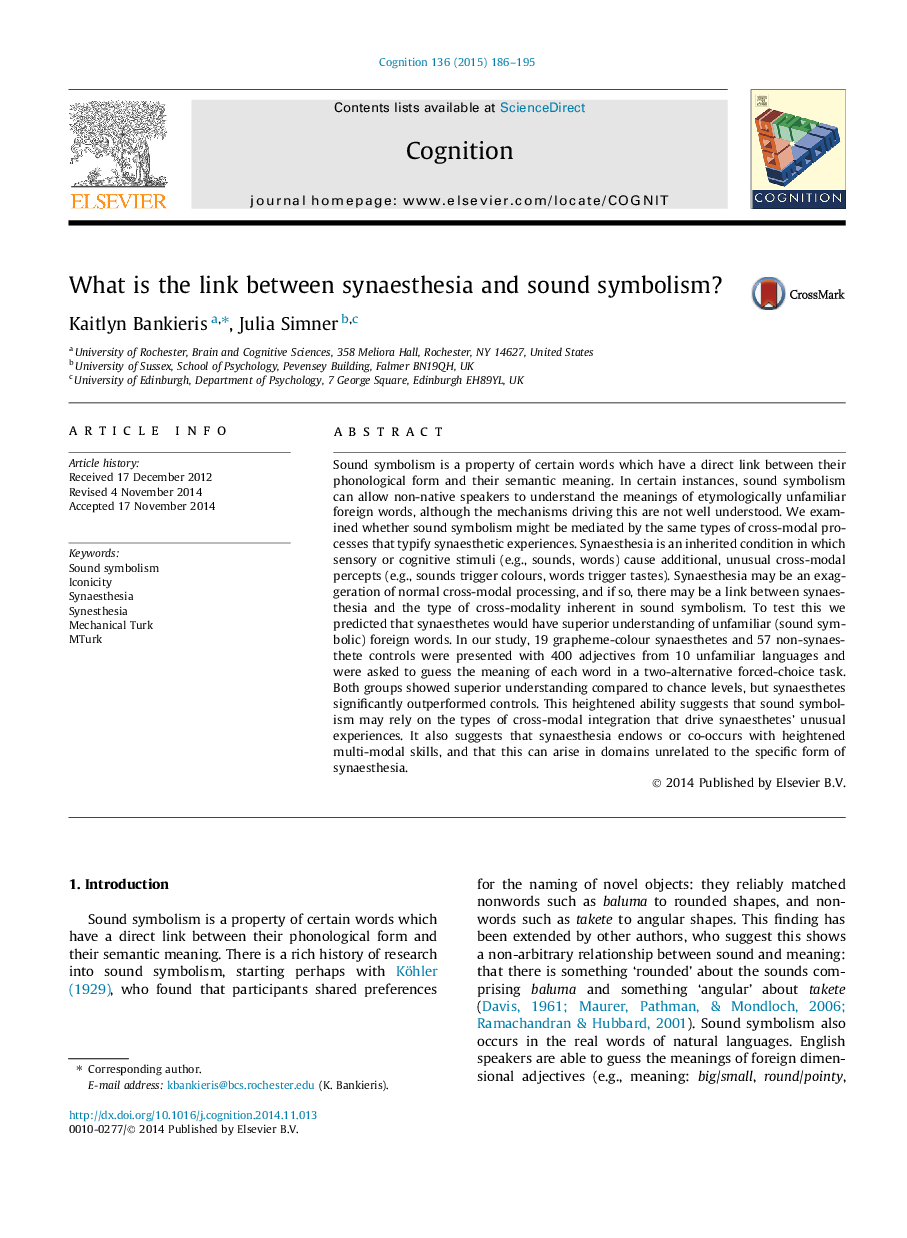| Article ID | Journal | Published Year | Pages | File Type |
|---|---|---|---|---|
| 7287348 | Cognition | 2015 | 10 Pages |
Abstract
Sound symbolism is a property of certain words which have a direct link between their phonological form and their semantic meaning. In certain instances, sound symbolism can allow non-native speakers to understand the meanings of etymologically unfamiliar foreign words, although the mechanisms driving this are not well understood. We examined whether sound symbolism might be mediated by the same types of cross-modal processes that typify synaesthetic experiences. Synaesthesia is an inherited condition in which sensory or cognitive stimuli (e.g., sounds, words) cause additional, unusual cross-modal percepts (e.g., sounds trigger colours, words trigger tastes). Synaesthesia may be an exaggeration of normal cross-modal processing, and if so, there may be a link between synaesthesia and the type of cross-modality inherent in sound symbolism. To test this we predicted that synaesthetes would have superior understanding of unfamiliar (sound symbolic) foreign words. In our study, 19 grapheme-colour synaesthetes and 57 non-synaesthete controls were presented with 400 adjectives from 10 unfamiliar languages and were asked to guess the meaning of each word in a two-alternative forced-choice task. Both groups showed superior understanding compared to chance levels, but synaesthetes significantly outperformed controls. This heightened ability suggests that sound symbolism may rely on the types of cross-modal integration that drive synaesthetes' unusual experiences. It also suggests that synaesthesia endows or co-occurs with heightened multi-modal skills, and that this can arise in domains unrelated to the specific form of synaesthesia.
Related Topics
Life Sciences
Neuroscience
Cognitive Neuroscience
Authors
Kaitlyn Bankieris, Julia Simner,
